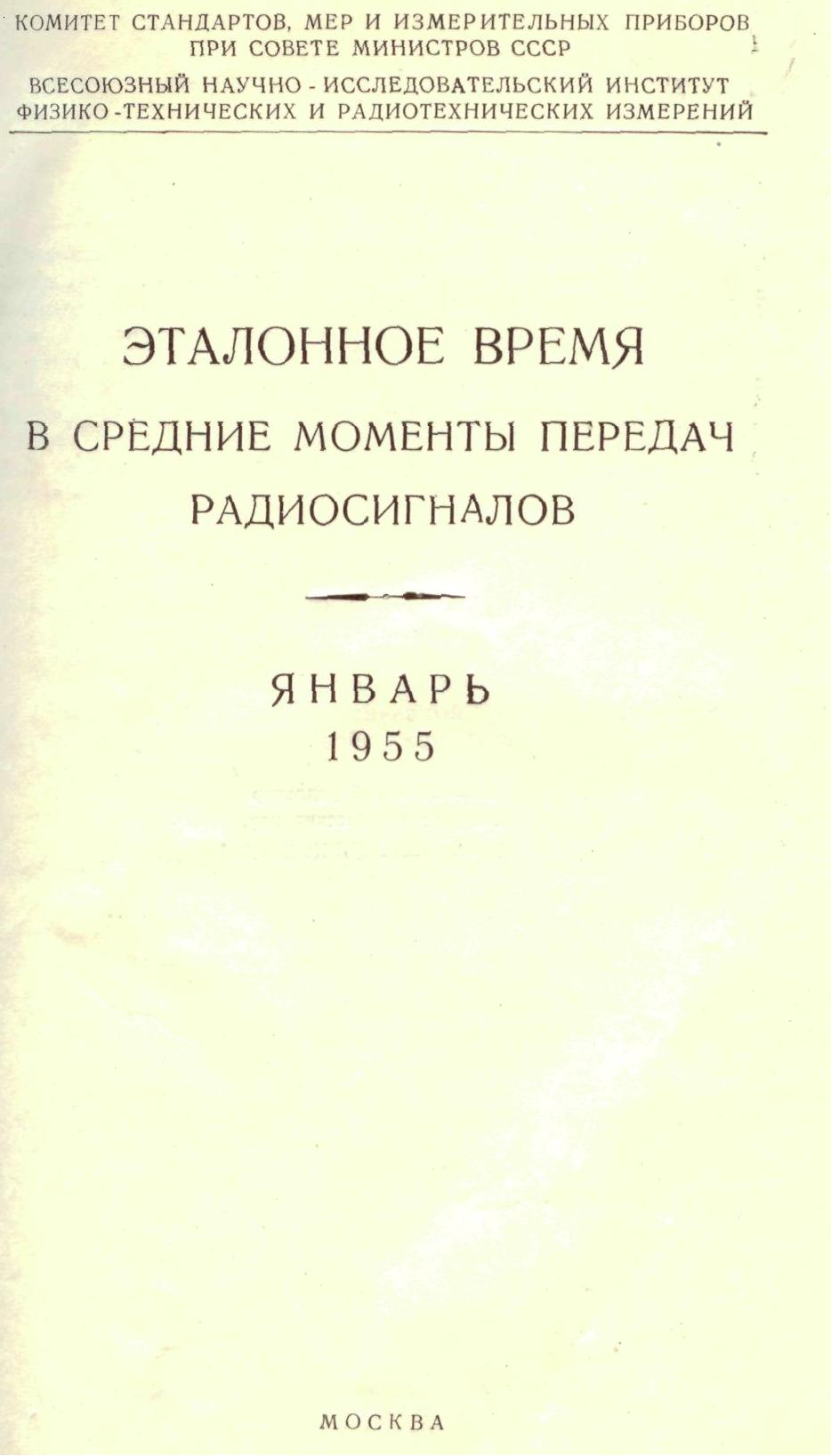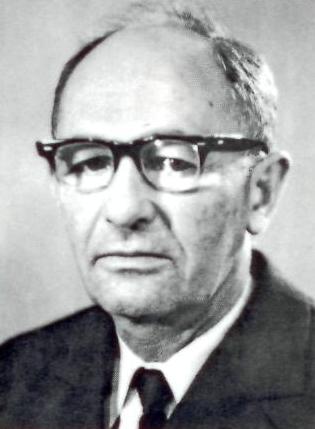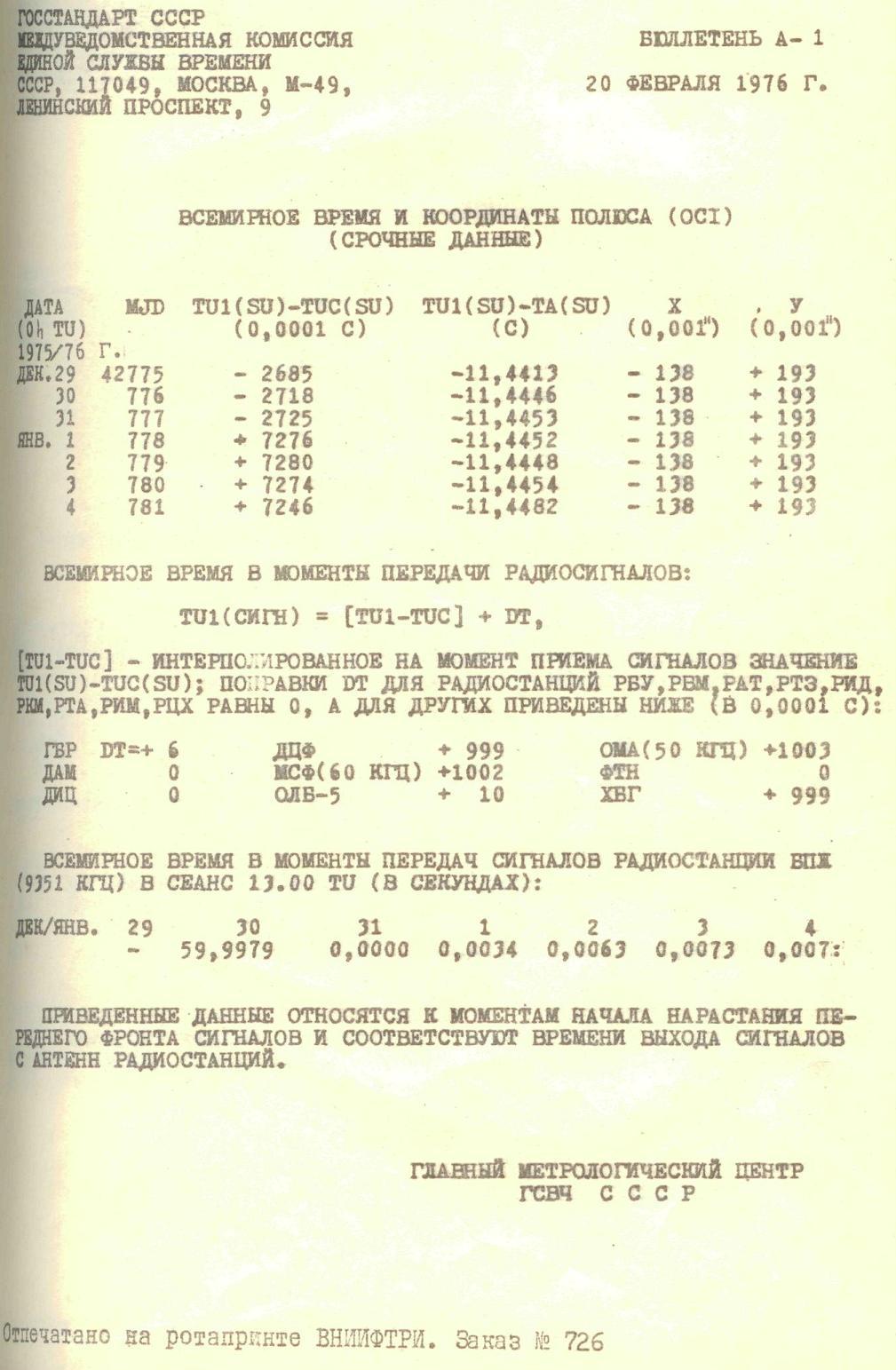Brief history of EOP Analysis Center of MMC SSTF
Historically, Main Metrological Center of State Service for Time and Frequency (MMC SSTF) arose as a result of the evolution of Central Scientific Research Bureau of State Service for Time (CSRB SST). According to the Decree of the Government of the Union of the Soviet Socialist Republic (USSR), CSRB SST has been entrusted with the management of activities for providing astronomical observations, evaluating the Universal Time UT1, its subsequent smoothing and use for calculating the so-called summary moments of rhythmic signals since 1949. That is, during these years, EOP evaluation results were used for the purposes of State Service for Time (short name for SSTF – State Service for time, frequency and EOP evaluation).
Until 1949, this work was headed by: in the post-war years – F.N. Krassovskiy Central Research Institute of Geodesy, Aerial Survey and Cartography (CNIIGAIK), in the war years – Sternberg Astronomical Institute of the Moscow State University named by M.V. Lomonosov (SAI MSU) and before World War II – Main (Pulkovo) Astronomical Observatory of Russian Academy of Science (MAO RAS). On the world level, this activity has been carried out by the Bureau International de l’Heure since 1912.
In 1955 on the base of CSRB SST, Central Scientific Research Institute of the radio measurements and Scientific Research Institute of the physical and technical measurements, the All-union (All-Russian now days) Scientific Research Institute of the physical and technical measurements (VNIIFTRI) was founded. CSRB SST has become one of the department of FSUE "VNIIFTRI", which become of the MMC SSTF base after that. The following figure shows one of the first Bulletins issued by the FSUE "VNIIFTRI".

Fig.1 Bulletin "Standard Time for average moments of radio signals transfer", January 1955
Universal Time UT1(SU) was evaluated from optical astronomy observations processing according to method, which was developed by David Yulievich Belocerkovskiy – the first header of the Earth's orientation parameters evaluation laboratory. He has unchanged leader of EOP evaluation laboratory from 1949 to 1990. David Yulievich Belocerkovskiy is author more than 80 scientific articles in the fields of time service and investigation of Earth's rotation irregularities. He was awarded with commendations and certificates of honor from GOSSTANDART, a badge "For services to standardization".

Fig.2 Belocerkovskiy D.Yu.
With the adoption of the Time Atomic (TA(SU)) scale as the official time scale and the beginning of the era of near-Earth space exploration, the main purpose of optic astronomical measurements is to evaluate the Earth’s orientation parameters. If, for the purposes of the time service, the obtained values of Universal Time (UT1(SU)) were smoothed in order to obtain the most stable time scale, than for the purposes of the Earth’s orientation parameters service, the task is to find all the irregularities of the Earth's rotation. Figure 3 shows the first SSTF bulletin A "Universal time and pole coordinates", which was released on February 20, 1976. Starting from this moment, both pole coordinates and universal time are determined. Calculations are carried out weekly according to the methodology developed by M.B. Kaufman.

Fig.3 First SSTF Bulletin А, 20 February 1976
The new methodology developed by M.B. Kaufman has been implemented since 18 June 2006. From now on, combined processing of the VLBI, GNSS and SLR measurement data for the Earth's orientation parameters service is providing in weekly mode. The daily EOP evaluations have been carried out since from 2006.
EOP values and measurements data one can find on ftp FSUE "VNIIFTRI". The last EOP SSTF Bulletins A one can find here.
04.03.2025
The EGU General Assembly 2025 will be held in VIENNA from April 27 to May 2 2025.
more information...





 pvz@vniiftri.ru
pvz@vniiftri.ru